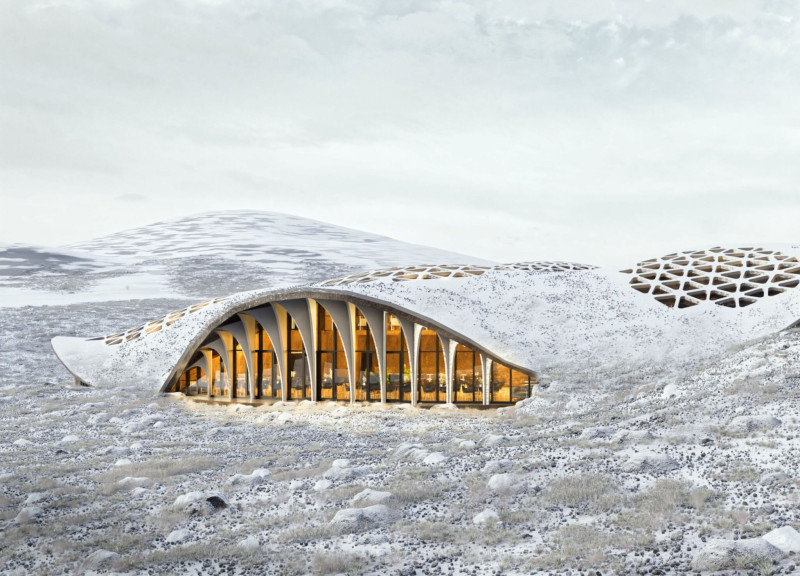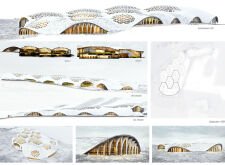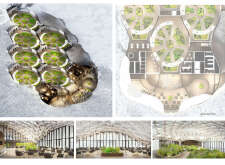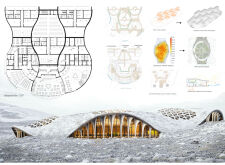5 key facts about this project
This project functions as a greenhouse restaurant and observatory, creating a space for visitors to enjoy local cuisine while being immersed in the breathtaking views of the surrounding volcanic terrain. It emphasizes the importance of local food sourcing by incorporating on-site cultivation, thereby minimizing transportation and reducing the carbon footprint associated with food production. The building is designed to showcase seasonal ingredients, reflecting the changing environment and supporting the local economy through sustainable practices.
At the heart of the design is a commitment to harmonizing with the natural landscape. The architectural approach employs organic forms that mimic the contours and rhythms of the surrounding topography. This not only enhances the aesthetic quality of the building but also serves a functional purpose. The continuous, flowing roof structure encourages natural light to flood the interior spaces while providing shelter from the winds that often sweep across the region. Expansive glass areas allow occupants to engage with the views and feel a connection to the environment, merging the boundary between indoors and outdoors.
The use of local materials is a fundamental aspect of the project. Reinforced concrete offers structural stability, while large glazing sections ensure that natural light permeates the space. The incorporation of local stone connects the structure to its geographic identity, reinforcing its roots in the environment. Additionally, wood elements warm the interior, creating an inviting atmosphere. This careful selection of materials is not only aesthetically pleasing but also serves to reduce the project's environmental impact by minimizing the need for transportation and supporting local industries.
Unique design approaches within the project include an emphasis on biophilic design principles, which aim to enhance occupants' connection to nature. The interior layout is versatile, accommodating both private dining experiences and communal gatherings, with strategically placed greenery throughout the space to improve air quality and create a more enjoyable dining environment. This adaptability allows the structure to respond to various community needs, thus playing a significant role in the social fabric of the area.
This project is also innovative in its approach to sustainability. By integrating greenhouses directly into the restaurant's design, it fosters an educational environment where visitors can learn about food production and environmental stewardship. The detailed design intimately connects the dining experience with the growing process, thereby enhancing appreciation for local agriculture and culinary practices.
Visitors to this architectural project can engage with the space in varied ways, exploring the interplay between landscape and architecture through the distinctive features that define the building. The flow of the architecture naturally guides guests, encouraging exploration and interaction with both the built environment and the surrounding natural beauty.
The Nature Iceland Greenhouse Restaurant and Observatory stands as a testament to thoughtful architectural design that is mindful of its surroundings and the community it serves. Those interested in a deeper understanding of the project are encouraged to explore the architectural plans, sections, designs, and ideas that contribute to this unique integration of ecology and architecture. The project illustrates how mindful architecture can enhance both functionality and the sensory experience, reflecting a commitment to sustainability and a connection to place. For more details on the project, a comprehensive presentation is available for further exploration.


























